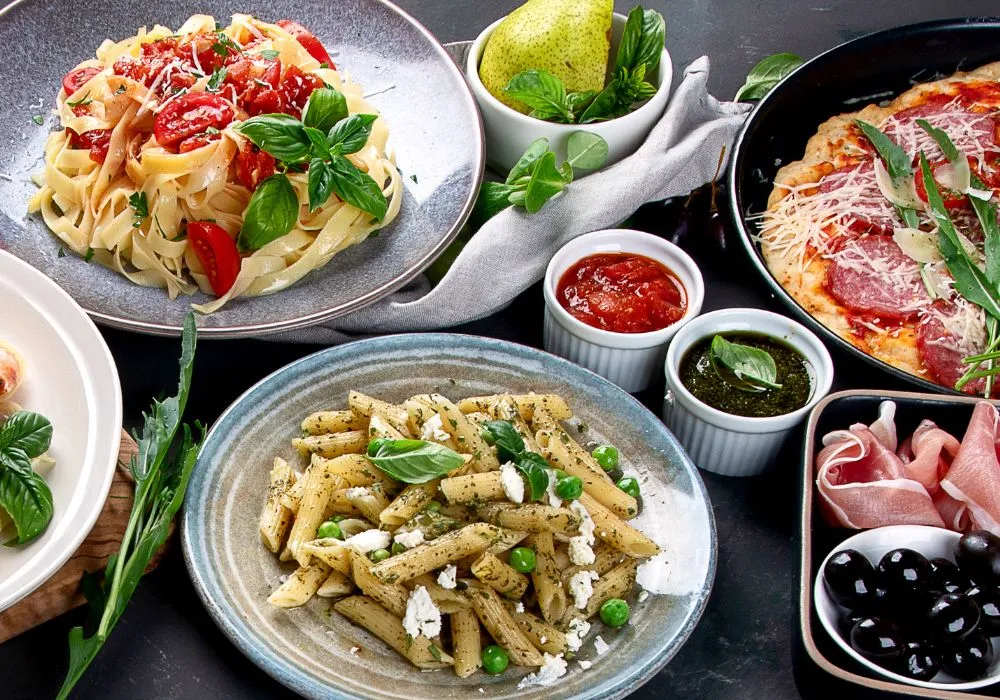Palentu a beloved gem of Italian cuisine stands as a timeless symbol of warmth, tradition, and culinary versatility. Known globally as polenta, this golden, cornmeal-based dish has graced Northern Italian kitchens for centuries. Over time, palentu has transcended its humble origins to become a worldwide favorite, admired for its rich, comforting flavor and its remarkable ability to complement both traditional and contemporary dishes.
What is Palentu?
Palentu is a traditional Italian dish made primarily from boiled cornmeal. Its origins trace back to ancient times when it was a peasant food made from various grains before corn was introduced to Europe from the Americas. Once corn became widely available, it quickly became the base ingredient for palentu, thanks to its affordability and nutritional value.
The texture of palentu can range from creamy and soft, similar to mashed potatoes, to firm and sliceable, depending on how long it’s cooked and cooled. It can be served as a main dish, a side, or even grilled and topped with cheese, vegetables, or sauces.
History and Cultural Significance of Palentu
The roots of palentu stretch deep into the rural regions of Northern Italy — particularly Lombardy, Veneto, and Friuli. For centuries, it was considered a “poor man’s meal,” sustaining families who worked the land. Over time, however, palentu evolved from humble origins to become a symbol of Italian comfort food.
Today, it’s a dish cherished across Italy and beyond, celebrated in restaurants and home kitchens alike. It’s served alongside meats, stews, seafood, and even as a base for vegetarian dishes, proving that simple ingredients can create extraordinary results.
How Palentu is Made
The classic recipe for palentu is simple but requires patience. Traditionalists insist on slow cooking the cornmeal in water (or sometimes broth) over low heat, stirring constantly for up to an hour. This process helps release the starches, creating a smooth and creamy consistency.
Basic Ingredients:
- Cornmeal (coarse or fine-ground)
- Water or stock
- Salt
- Butter or olive oil (optional)
- Cheese (Parmesan or Pecorino for richness)
Cooking Steps:
- Bring salted water or broth to a gentle boil.
- Slowly pour in the cornmeal while stirring continuously to prevent lumps.
- Lower the heat and continue stirring for 40–60 minutes until thick and creamy.
- Add butter and cheese for a richer flavor.
- Serve warm or pour into a dish to cool for slicing later.
Modern cooks often use instant polenta, which reduces the cooking time to just a few minutes — perfect for busy lifestyles.
Different Ways to Serve Palentu
The beauty of palentu lies in its versatility. It can be enjoyed in numerous ways depending on personal preference or regional tradition.
Creamy Palentu
Served hot and soft, this version is often paired with hearty sauces, mushrooms, or braised meats. It’s perfect for cold evenings when you crave comfort food.
Fried or Grilled Palentu
Once cooled, palentu can be sliced and pan-fried or grilled until golden brown and crispy on the outside. It makes an excellent side dish or appetizer.
Baked Palentu
Layered with cheese, tomato sauce, and vegetables, baked palentu resembles a cornmeal lasagna — a satisfying vegetarian option.
Sweet Palentu
In some regions, palentu is sweetened with milk, honey, or sugar and served as a dessert — showcasing its flexibility beyond savory meals.
Health Benefits of Palentu
Beyond its delicious taste, palentu offers several nutritional benefits:
- Gluten-Free: Naturally free from gluten, palentu is an excellent choice for those with celiac disease or gluten sensitivity.
- Rich in Fiber: Helps with digestion and promotes a healthy gut.
- Low in Fat: When prepared without heavy toppings, palentu is a light yet filling dish.
- Source of Complex Carbohydrates: Provides long-lasting energy, ideal for an active lifestyle.
- Contains Essential Minerals: Such as magnesium, phosphorus, and iron.
When topped with vegetables or lean proteins, palentu can form a balanced, nutrient-rich meal.
Palentu in Modern Cuisine
In contemporary gastronomy, palentu has evolved from rustic simplicity to gourmet elegance. Chefs around the world incorporate it into fine dining menus, pairing it with truffle oil, seafood, roasted vegetables, or wild mushrooms. Its ability to absorb flavors makes it a versatile canvas for culinary creativity.
In vegan and vegetarian cooking, palentu often replaces rice or pasta as a gluten-free, wholesome alternative. It can also be used as a base for savory pies or breakfast bowls.
Tips for Perfect Palentu
- Use the Right Cornmeal: Coarse-ground cornmeal creates a traditional texture, while fine-ground gives a smoother finish.
- Stir Consistently: This prevents lumps and ensures even cooking.
- Add Flavor: Use broth instead of water for extra depth.
- Experiment with Toppings: From sautéed greens to cheese or grilled veggies, toppings elevate the dish.
- Don’t Waste Leftovers: Cooled palentu can be sliced, fried, or baked for another meal.
Conclusion
Palentu is more than just a dish — it’s a story of tradition, resilience, and culinary creativity. From its humble beginnings in the Italian countryside to its modern-day presence in global cuisine, palentu continues to win hearts with its comforting texture, versatility, and timeless appeal.
Whether enjoyed as a creamy side, a crispy snack, or a gourmet entrée, palentu proves that simplicity often leads to the most satisfying results. So next time you’re in the kitchen, embrace the Italian spirit and cook a bowl of golden palentu — the ultimate comfort food.




